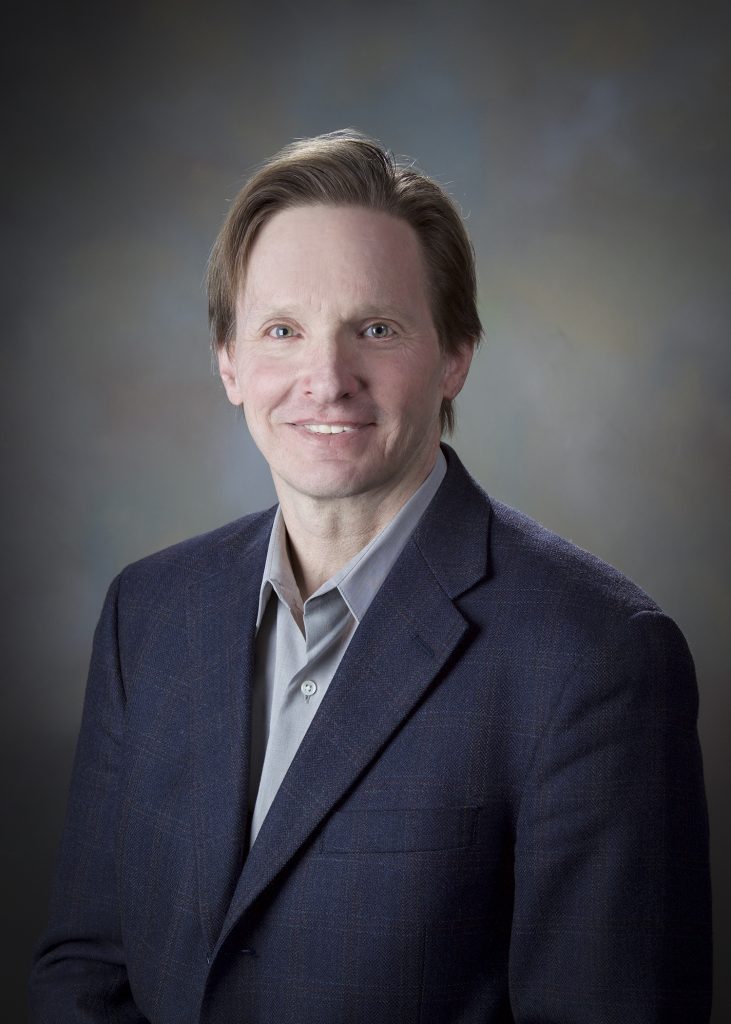ALBUQUERQUE, N.M. — Running a model of the global atmosphere with unprecedentedly high resolution on the world’s first exascale supercomputer, a team led by Sandia National Laboratories has won the Gordon Bell Prize for Climate Modeling presented by the Association for Computing Machinery. The award, announced Nov. 16 at the SC23 convention in Denver, recognizes innovative computing contributions aimed at addressing the global climate crisis.

Sandia researcher Mark Taylor, the project’s chief computational scientist. (Photo by Lonnie Anderson) Click on thumbnail for a high-resolution image.
“We have created the first global cloud-resolving model to simulate a world’s year of climate in a day,” said Sandia researcher Mark Taylor, the chief computational scientist of the Energy Exascale Earth Systems Model, or E3SM, an eight-lab project led by Lawrence Livermore National Lab and supported by the DOE’s Office of Science for the development of advanced climate models. “We’re ushering in a new era of accuracy.”
The E3SM model simulates critical aspects of Earth’s climate system, predicting potential impact on U.S. conditions in the coming decades, including extreme temperatures, droughts, floods, and rising sea levels. Taylor, who led the Gordon Bell submission, detailed the team’s record-setting demonstration of SCREAM, the Simple Cloud Resolving E3SM Atmosphere Model, on Oak Ridge National Laboratory’s Frontier supercomputer, capable of 1.2 exaFLOP — 1.2 quintillion — computing operations per second.
Clouds play a critical role in Earth’s climate system, influencing weather patterns and precipitation, said Taylor. “Traditional Earth system models struggle to accurately represent clouds because they cannot simulate the small overturning circulation in the atmosphere responsible for cloud formation. Instead, they rely on complex approximations of these processes. This next-generation program has the potential to substantially reduce major systematic errors in precipitation found in current models,” he said, “due to its more realistic and explicit treatment of convective storms and the atmospheric motions responsible for cloud formation.”
Incorporating state-of-the-art parameterizations for fluid dynamics, microphysics, moist turbulence, and radiation, SCREAM is a full-featured atmospheric general-circulation model developed for very fine-resolution simulations on exascale machines. SCREAM, led by Peter Caldwell of LLNL, achieved these novel results through a close collaboration between atmospheric scientists and computational scientists. The Gordon Bell Prize for Climate Modeling, according to ACM, “aims to recognize innovative parallel computing contributions toward solving the global climate crisis.” Awarded for the first time this year at the International Conference for High-Performance Computing, Networking, Storage, and Analysis, SC23, in Denver, it was accompanied by a $10,000 prize provided by Gordon Bell, a pioneer in high-performance computing. The Sandia-led model was selected based on its potential to impact climate modeling and related fields.
For more information on E3SM, visit https://e3sm.org/.
Sandia National Laboratories is a multimission laboratory operated by National Technology and Engineering Solutions of Sandia LLC, a wholly owned subsidiary of Honeywell International Inc., for the U.S. Department of Energy’s National Nuclear Security Administration. Sandia Labs has major research and development responsibilities in nuclear deterrence, global security, defense, energy technologies and economic competitiveness, with main facilities in Albuquerque, New Mexico, and Livermore, California.
Sandia news media contact: Neal Singer, nsinger@sandia.gov, 505-977-7255
